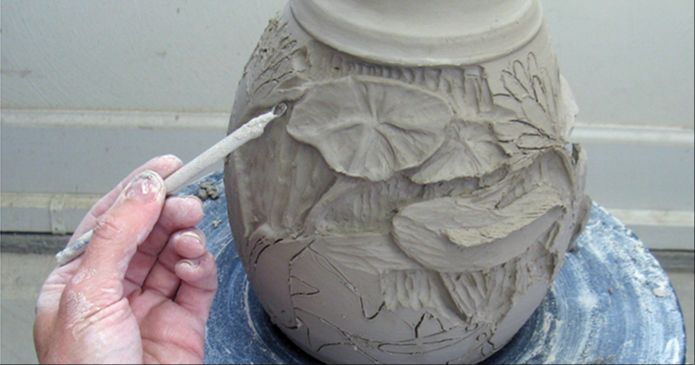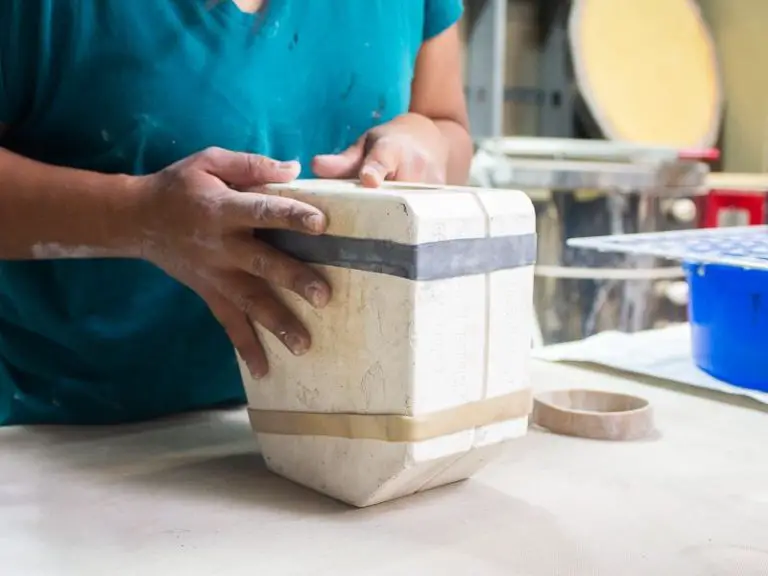How Do You Naturally Color Clay?
Naturally colored clay refers to clay that derives its hue from the natural presence of mineral pigments, rather than artificial coloring agents. These pigments are inherent properties of the raw clay composition and emerge through traditional processing techniques of weathering, mining, and firing.
The most common mineral pigments giving clay its natural coloration include iron oxides, which produce red, orange, or yellowish hues; manganese oxides, which generate shades of black, brown, pink, or purple; chromium oxides, which yield olive and greenish tones; and organic matter such as decomposed plant material, resulting in grey or bluish clays.https://en.wikipedia.org/wiki/Clay The concentration and combination of these elements lend clay its diverse palette across geologic origins.
By harnessing inherent colorants, natural clay coloring eschews the use of artificial dyes or stains. This provides artistic and environmental benefits. Naturally pigmented clays allow ceramicists to achieve aesthetic effects reminiscent of the earth, with gentle, nuanced hues. Reliance on native pigments also eliminates potentially toxic manufacturing waste and preserves the ecological integrity of clay deposits. Understanding how to source and process naturally colorful clays unlocks their unique potential in ceramic art and craft.
Clay Composition
The composition of clay affects its ability to be naturally colored. Clays are composed of a variety of minerals that give clay its plasticity and ability to be shaped and fired into ceramics. The three main types of clays are kaolin, bentonite, and ball clay.
Kaolin clay, also known as China clay, is white in color and contains mostly kaolinite, which is a hydrated aluminum silicate mineral. Kaolin clays are not very plastic and lend whiteness and refinement to finished ware (Arthurharrisson.com).
Bentonite clays contain high amounts of montmorillonite, which is a very plastic clay mineral. Bentonite clays are very sticky and plastic. The plasticity allows the clay to be easily shaped (Arthurharrisson.com).
Ball clays are more plastic than kaolin but less than bentonite. Ball clays contain kaolinite and other clay minerals as well as quartz and mica. Different ball clays will contain varying amounts of these minerals depending on where they are sourced (Arthurharrisson.com).
The mineral content of the clay affects the color. Iron oxides produce buff, brown, and red colors. Manganese oxides produce buff and pinkish colors. Titanium oxide produces white colors. Chromites produce greenish colors. The more iron, manganese, and other minerals in the clay, the darker the fired color will be (IJTRD3510.pdf).
Iron Oxides
Iron oxides are one of the most common natural pigments found in clay that produce earthy red, orange, and brown colors. The specific iron oxide minerals that contribute color include hematite, limonite, and goethite.
Hematite (Fe2O3) contains the most concentrated iron content and produces a strong red color in clay bodies. This occurs when the iron ions are oxidized during firing. As hematite concentrations increase in the clay, the color becomes a deeper red.
Limonite (FeO(OH)·nH2O) is a hydrated iron oxide that produces yellowish brown and orange colors. The color depends on the degree of hydration. Increased hydration leads to more yellowish brown tones.
Goethite (α-FeO(OH)) is also a hydrated iron oxide mineral that can create brownish yellow colors in clay. The intensity of the brown color is proportional to the goethite concentration.
In general, higher firing temperatures help develop richer and darker iron oxide colors in clay. Longer soak times at peak temperatures also promote iron ion diffusion in the clay body for more uniform and intense colors.
Chromium Oxides
Chromium oxides naturally occur in some clays and produce stunning blue and green colors. The chromium in these clays forms compounds called chromophores which cause color. The specific chromophore chromium(III) oxide (Cr2O3) produces green and blue-green hues.
When chromium oxide is present in a clay’s composition, firing the clay causes the chromium ions to become part of the clay crystal structure. As the clay vitrifies during firing and becomes glass-like, the chromium ions absorb certain wavelengths of light and reflect green/blue wavelengths back. The more chromium oxide in the clay, the more intense the color saturation.
Clays high in chromium oxides like Kentucky Ball Clays and New Zealand Halloysite create vivid blue and green results when fired. These clays can be used alone or blended with other clays to create a wide palette of blue-green tones.
Manganese Oxides
Manganese oxides are another common mineral found in natural clay that produces color. Specifically, manganese oxide minerals impart buff, pink, brown, and purple hues to clay. This occurs through a chemical reaction during firing where the manganese ions are oxidized, resulting in these warm earthy tones.
The most notable manganese oxide mineral occurring in clay is pyrolusite. This mineral contains high levels of manganese dioxide, which acts as a flux during firing that aids vitrification. The pinkish and purplish colors from pyrolusite become especially prevalent in stoneware and porcelain clays fired at high temperatures.
Other manganese oxide minerals found in colored clays include manganite, hausmannite, and braunite. Clays with substantial concentrations of these manganese-rich minerals will fire to shades of light pink, peach, or brick red. The vibrancy of the colors depends on factors like clay composition, firing temperature, and activation of the manganese ions during oxidation.
Organic Matter
Organic matter in clay refers to plant and animal residues at various stages of decomposition. Organic matter particles get coated with clay during the soil formation process, leading to colors ranging from gray to brown to black. According to the Digitalfire article “Organic Matter in Clays: Detailed Overview”, thermal decomposition of organic material during firing can cause the “black core” phenomenon in ceramics as organic compounds burn off.
The main organic matter components that color clay are:
- Plant matter such as roots, leaves, and stems
- Humus formed through the decomposition of organic materials
- Charcoal and ash residues from the burning of plant matter
In general, higher organic matter content leads to darker gray, brown, and black clays. As the Digitalfire article explains, “The color depends on the nature and quantity of the organic material and its degree of decomposition.” Fresh plant matter tends to create gray clays while more decomposed humus makes brown and black clays.
Sourcing Pigmented Clays
Certain locations around the world are known for their deposits of naturally pigmented clay. These clays get their vibrant colors from high concentrations of metal oxides, organic matter, and other natural pigments in the soil.
Some key areas to find colored clays include:
- Georgia, United States – Known for its red clay deposits which get their color from iron oxide
- Brazil – Home to purple, pink, red, and yellow clay deposits that contain manganese and iron oxides
- Hawaii, United States – Hawaii has rich red clay made of iron oxide called Hawaiian red dirt
- France – Regions like Provence and Burgundy have clay quarries with a diverse range of natural clay colors
- Italy – Especially Tuscany, Umbria, and Sicily where colored clay deposits are abundant
- New Zealand – The North Island has gray, red, yellow, white and brown natural clay beds
Knowing the source location of naturally pigmented clays allows you to identify clays with desired colors. Specific clay-rich regions often produce clays in certain hues based on the mineral content. Always source natural clays ethically and sustainably when collecting your own samples from deposits.
References:
https://www.earthpigments.com/clay-brown-pigment/
https://justpigments.com/collections/clays
Blending Clays
One way to naturally color clay is by simply blending clays of different natural hues together. This allows you to mix and match shades to produce a wide array of colors. For example, you can blend a red clay with a yellow clay to produce orange tones. Mixing a red clay with a white kaolin clay produces pinkish hues. The color possibilities are endless.
When blending clays, it’s best to start with a higher ratio of your base clay, then add in smaller amounts of the coloring clay. This gives you more control over the final color. For example, if your base clay is white, start with 4 parts white clay to 1 part red clay. Adding more of the red clay intensifies the pink tone. The wetter the clays, the easier they blend together.
Some commonly available natural clay colors to blend include red, yellow, brown, grey, white/kaolin, and black clays. Interestingly, natural clay deposits themselves are colored by the mineral oxides present in the soil, like iron oxides which produce red and yellow clays. Blending together different natural clays is an easy way to achieve a diverse palette of colored clays for pottery or sculpture.
Firing
Firing temperature has a significant effect on the colors produced in natural clays. Higher firing temperatures intensify the existing colors in the clay body. Iron oxide-rich red and brown clays will turn darker at higher temperatures, while white and buff clays will become whiter. According to the Guide to Kiln Temperature Ranges for Pottery, typical high-fire stoneware is fired between 2305°F to 2336°F (1263°C to 1326°C). At these high temperatures, the iron oxide minerals undergo chemical changes that produce deep red and brown hues.
In contrast, low-fire earthenware clays are fired between 1652°F and 2102°F (900°C and 1150°C) according to CLAY TYPES AND FIRING TEMPERATURES. At these temperatures, the iron oxide reactions are not as intense, resulting in lighter and more muted natural clay colors. The organic matter also does not burn out completely at low fire, leaving small black flecks that influence the final colors. In summary, high fire intensifies natural clay colors, while low fire yields softer, earthier tones.
Conclusion
In summary, naturally coloring clay has many benefits compared to using synthetic dyes. The natural earth pigments like iron, chromium, and manganese oxides provide rich and vibrant colors while being gentle on skin and hair. Clays colored with organic matter like plants, spices, and fruits offer health benefits beyond just color. Using natural clays avoids exposure to the harsh chemicals found in synthetic dyes. Blending your own clays allows endless possibilities for custom colors. With proper firing, these earth pigments create lasting color while maintaining the therapeutic properties of the clay. For both beauty and wellness benefits, naturally colored clays are a wonderful, natural alternative to synthetic options.



